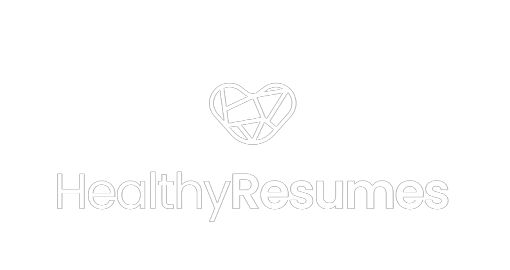As a resume writer, I talk to thousands of people a year – evaluating resumes and creating new ones from scratch. Lately, I’ve noticed a lot of people wanting me to create a resume with career change in mind. This, of course, is no problem once you understand what transferrable skills are and how to use them.
When people want a career change midlife or even after working their entire career in one area, they always seem split. While they are excited that they finally found their passion and what they want to do, they are usually terrified, thinking they won’t even get a second look because they haven’t work in the field yet. It’s a skills game. It really is.
Resume skills based sections equal skills game. The goal of this game is to connect the dots between your experience and how it matches well with the job you are applying for. AKA: find transferable skills.
You’d be hard-pressed to meet a recruiter who passed up a quality candidate on a hard-to-fill job just because their skills didn’t match 100%. When you put those transferrable skills up at the top of your resume with explanations of how you’ve been successful using them, they will see your value.
What are the transferrable skills I keep talking about?
Creating a resume with career change in mind means you need to dig deep to find out whether certain skills or tasks in your current job can be relevant to what you want to do next.
For example, if the job is a leadership position and you’ve never been a people leader before, find ways to create a resume update that showcases other areas of people leadership.
Have you ever been an interim leader? Have you helped train and develop new staff members? Have you ever worked on a group project as the team lead? These are all transferrable skills that relate to people leadership.
Say you want to be Project Manager, but you haven’t actually worked in the field yet. This is when you need to stack a resume with career change in mind. Think of all the things a Project Manager does.
They identify requirements, assign tasks, monitor project progress, and report back to leaders or stakeholders about progress or issues.
Now, think about your job. Have you ever had a couple of tasks where you needed to collaborate with others, have excellent time management and prioritization skills, pay attention to deals, or even tell your boss/leader about the results of something that you worked on? List those all on a resume update. Again, it’s a skills game! You need to learn how to play the game.
What does a resume for career change clients look like?
For the career change clients that I work with, I always preach that they need to impress the reader with the first half of the first page of their resume.
Start with a basic resume template on word. Then jazz it up with formatting to help showcase the parts of the resume (transferrable skills) that you want the reader to see right away. You can use boxes, shading, lines, and professional accent colors to really set yourself apart visually.
With a resume for career change, you want your executive summary to really tell the story about why your background is a match and that you have the skills necessary to be successful in the job.
If you need help figuring out how your background matches, feel free to schedule a free resume evaluation with me. I can help direct you down the right path!
If you’d prefer to do it yourself, start by reading the responsibilities and requirements sections of the job description. Find certain tasks/requirements that you have experience in or you think you would be good at and highlight them in your executive summary.
These same skills should also be listed in the resume skills based section right after the summary. This section is really a bunch of key works and skills listed out so the reader can check the boxes to make sure you are a fit. Best practice is to list 15-20 skills in the resume skills section. You need to complete a resume update regularly to keep up with these skills and make sure your transferrable skills are really highlighted in the right way.
How do I highlight transferrable skills on a resume for career change?
After your executive summary and skills section, I always advocate for a career highlight section for my career change clients. As I said before, this is a wonderful opportunity to connect the dots between your experience and the job by showcasing your accomplishments and the impact you’ve made utilizing those transferrable skills.
I suggest that you pick 2-3 of the top accomplishments that are targeted towards what you are trying to get into next. Write these in a way where you talk about the transferrable skills you used, the actions you took on that project, and the outcome or impact that you made.
What about transferrable skills in the work history?
Let me start by saying that resumes have changed significantly over the past 5 years. You have platforms like LinkedIn where you can really build your brand and showcase your transferrable skills effectively. If you need help with branding your LinkedIn profile, start with this article.
A resume is no longer a big long list of all the jobs you’ve had across your entire career.
Focus on the last 2-3 jobs that you’ve held and put a lot of detail and accomplishments under those.
When you write about your responsibilities of each job, make sure you are focusing on the transferrable skills and really targeted your resume for career change.
Instead of listing everything you’ve ever been responsible for, list the top couple of responsibilities that transfer over well to what you want to get into.
From there, focus on 3-5 bullet points that will show your true value.
If you can show that you’ve been successful in a job and that you’re eager, innovative, a leader… it’s hard for someone to discount that just because you don’t check every single box.
For examples of this, check out some of the sample resumes I have done.
What happens if you can’t find enough transferrable skills for your resume update?
Easy! Go out and get some.
There are tons of places you can go to get free or low-cost certifications in certain areas. You can take free trainings to develop certain skills, you can even join a club that helps develop transferrable skills focused on leadership, public speaking/presentation skills, and more technical skills as well.
If you can show a recruiter that you are actively working on building the skills required or the transferrable skills that match well, they will be inclined to rule you in rather than weed you out. Sometimes this is all you need!
What about your education on a resume for career change?
Say you’ve built your career for 15-20 years and decided that you’d like to focus on or do something new. So, you go to school and dedicate a few years to learning something new that you want to grow into the next stage of your career.
That’s awesome! Definitely let that shine.
If you’re not a brand-new graduate, I usually suggest putting your education at the bottom of your resume. This is because you want your experience to shine more than your education does.
However, if you just went to a specialized program to train in an area you want to get into, you should put that right up top. You can move the entire education section towards the top of your resume, or you can talk about the program or degree in your executive summary or career highlights section.
Hiring leaders absolutely care about education on a resume for career change.
If you didn’t go to the exact program that is preferred for the job, this is where your transferable skills come in.
Think about the projects you’ve worked on that would be similar to what you would do in your next role. Did you act as a consultant helping out a company in the industry you want to be in? Did you participate in a group project where you were responsible for a key part of the project that relates well to that next job?
Awards, certifications, and professional affiliations on a resume update can help you shine!
Never discount the power of networking.
If you haven’t worked in a field yet, but would like to, join the professional associate for that field. Reach out to members and connect with them on LinkedIn.
Go to those member’s skills section on their LinkedIn profile and find the ones that relate to your background and what you can do. What transferrable skills can you think of that can draw a dotted line to that hard skill you don’t yet have?
If you don’t know what a hard skill vs. a soft skill is, check out this article.
Pro Tips for Career Change Resumes
You want to make it obvious very quickly that you are a fit for what you are applying for… even if you’re never done that job.
A great way to do that is to add variations of the job titles that you want into your executive summary. Then follow that up with transferrable skills and things you’ve been responsible for that match the main job duties.
This helps the reader quickly see that you’re a fit.
Resume for Career Change and Transferrable Skills Conclusion
It’s cheesy, but you miss 100% of the shots you don’t take. Don’t let the fact that you haven’t worked in a field stop you from applying or setting your sights high.
Everyone starts somewhere. Showcasing the skills you do have and how you can connect them to your goal position is guaranteed to make an impact.
Don’t be shy asking for help either. Sometimes it takes a neutral party to look over your work history or education and find those missing pieces. Schedule a free resume evaluation with us and get expert and tailored advice on how to take your resume up a notch.

